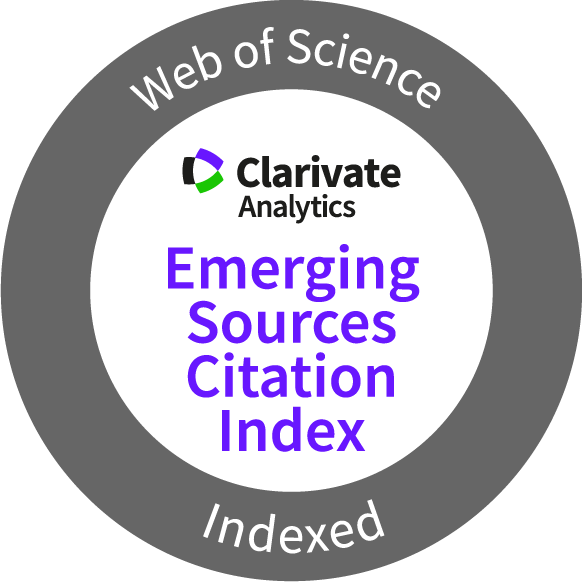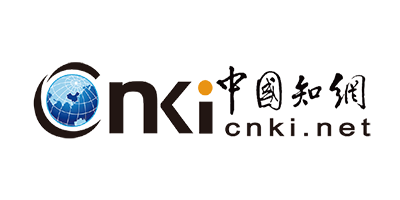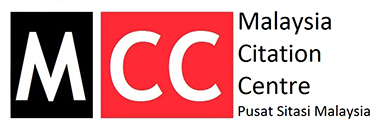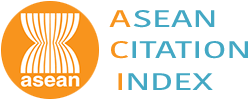Comparative Blood Profile Analysis of Captive Green (Chelonia mydas) and Hawksbill (Eretmochelys imbricata) Turtles
Keywords:
Blood Biochemistry, Blood Gas, Endangered Species, Hematological Morphology, South China SeaAbstract
The green turtle (Chelonia mydas) and hawksbill turtle (Eretmochelys imbricata), classified as endangered and critically endangered, respectively, face significant survival threats. To assess their health status, a study was conducted using a portable blood analyzer on eight captive sea turtles kept at the Fisheries Research Institute of Rantau Abang (FRIRA), Terengganu, Malaysia. Blood gas, biochemical, and hematological parameters were analyzed. Findings were generally consistent with previously reported hematological values and morphology, except for total white blood cell (WBC) counts. Comparisons with published data on sea turtles worldwide showed higher ranges of mean values for lactate (Lac), glucose (Glu), creatinine (Crea), blood urea nitrogen (BUN), packed cell per volume (PCV), and WBC counts. Captive green and hawksbill turtles exhibited higher concentrations of Glu and Lac than previously documented values, with mean Glu and Lac levels of 100.50 mg/dL and 6.75 mmoL/L in green turtles and 121.00 mg/dL and 0.93 mmoL/L in hawksbill turtles. These variations were attributed to differences in life stage, diet, and environmental conditions. Glucose levels were indicative of dietary influence, while lactate concentrations suggested stress, emphasizing the importance of specialized dietary management and the potential stress experienced by green turtles in captivity. These findings provide invaluable reference points for monitoring the health of captive sea turtles in rehabilitation settings. Additionally, it also highlights the unique physiological characteristics of sea turtles in the South China Sea and the impact of captivity on their blood profiles, contributing to ongoing conservation efforts.
Downloads
Metrics
References
Arango, B.G., Harfush-Melendez, M., Marmolejo-Valencia, J.A., Merchant-Larios, H.N. & Crocker, D.E. 2021. Blood oxygen stores of Olive Ridley Sea Turtles, Lepidochelys olivacea, are highly variable among individuals during arribada nesting. Journal of Comparative Physiology B, 191: 85–194. DOI: https://doi.org/10.1007/s00360-020-01321-1
Basile, F., Di Santi, A., Ferretti, L., Bentivegna, F. & Pica, A. 2012. Hematology of the Mediterranean population of sea turtle (Caretta caretta): Comparison of blood values in wild and captive, juvenile and adult animals. Comparative Clinical Pathology, 21: 401–406. DOI: https://doi.org/10.1007/s00580-011-1306-4
Bluvias, J.E. & Eckert, K.L. 2010. Marine turtle trauma response procedures: A husbandry manual. Wider Caribbean Sea Turtle Conservation Network (WIDECAST) Technical Report, 10: 1–100.
Carr, A., Ross, P. & Carr, S. 1974. Inter-nesting behavior of the Green Turtle, Chelonia mydas, at a mid-ocean island breeding ground. Copeia, 3: 703–706. DOI: https://doi.org/10.2307/1442684
Casal, A.B., Camacho, M., Lopez-Jurado, L.F., Juste, C. & Oros, J. 2009. Comparative study of hematologic and plasma biochemical variables in Eastern Atlantic juvenile and adult nesting Loggerhead Sea Turtles (Caretta caretta). American Society for Veterinary Clinical Pathology, 38(2): 213–218. DOI: https://doi.org/10.1111/j.1939-165X.2008.00106.x
Chan, E.H. 2006. Marine turtles in Malaysia: On the verge of extinction? Aquatic Ecosystem Health and Management, 9(2): 175–184. DOI: https://doi.org/10.1080/14634980600701559
Chandrasekar, K. & Srinivasan, M. 2013. Sea turtle exploitation from Tamil Nadu, southeast coast of India. Journal of Entomology and Zoology Studies, 1:11–14.
Chittick, E.J., Stamper, M.A., Beasley, J.F., Lewbart, G.A. & Horne, W.A. 2002. Medetomidine, ketamine, and sevoflurane for anesthesia of injured loggerhead sea turtles: 13 cases (1996–2000). Journal of American Veterinary Medical Association, 221: 1019–1025. DOI: https://doi.org/10.2460/javma.2002.221.1019
Davis, A.K., Maney, D.L. & Maerz, J.C. 2008. The use of leukocyte profiles to measure stress in vertebrates: A review for ecologists. Functional Ecology, 22(5): 760–772. DOI: https://doi.org/10.1111/j.1365-2435.2008.01467.x
Delcroix, E., Leveque, F., Coudret, J., Bonotto, S., Créantor, S. & Charrieau, M. 2009. Foraging by a gravid Green Turtle during the internesting interval in Guadeloupe, French West Indies. Marine Turtle Newsletter, 125: 12–13.
Denkinger, J., Parra, M., Munoz, J.P., Carrasco, C., Murillo, J.C., Espinosa, E., Rubianes, F. & Koc, V. 2013. Are boat strikes a threat to sea turtles in the Galapagos Marine Reserve? Ocean Coastal Management, 80: 29–35. DOI: https://doi.org/10.1016/j.ocecoaman.2013.03.005
Dilrukshi, N.H.N., Jayasooriya, A.P. & Prathapasinghe, G.A. 2019. Hematological parameters and morphological characteristics of blood cells in turtle and tortoise species within captivity in Sri Lanka. Journal of Advanced Veterinary and Animal Research, 6(3): 266–271.Nardini, G., Leopardi, S. & Bielli, M. 2013. Clinical hematology in reptilian species. Veterinary Clinics: Exotic Animal Practice, 16(1): 1-30. DOI: https://doi.org/10.5455/javar.2019.f343
Escobedo-Bonilla, C.M., Quiros-Rojas, N.M. & Rudín-Salazar, N. 2022. Rehabilitation of Marine Turtles and Welfare Improvement by Application of Environmental Enrichment Strategies. Animals, 12: 282. DOI: https://doi.org/10.3390/ani12030282
Fonseca, L.A., Fagundes, V., Girardi, F.M. & Dornelas, L.R.S. 2020. Blood values of cortisol, glucose, and lactate in healthy Green Turtle (Chelonia mydas) and affected by fibropapillomatosis. Comparative Clinical Pathology, 29: 1099-1105. DOI: https://doi.org/10.1007/s00580-020-03148-2
Ghazali, A.F. & Jamil, N. 2019. Population and trend analysis for Green Turtle (Chelonia mydas) and Hawksbill Turtle (Eretmochelys imbricata) in Marine Park Centre Redang, Terengganu and Marine Park Centre Rusukan Besar, Labuan, Malaysia. Pertanika Journal of Science and Technology, 27: 1061–1076.
Goldberg, D.W., Leitao, S.A.T., Godfrey, M.H., Lopez, G.G., Santos, A.J.B., Neves, F. A., de Souza, P.G., Moura, A.S., Bastos, J.C. & Bastos, V.L.F. 2013. Ghrelin and leptin modulate the feeding behavior of the Hawksbill Turtle (Eretmochelys imbricata) during nesting season. Conservation Physiology, 1: 1–13. DOI: https://doi.org/10.1093/conphys/cot016
Harms, C.A., Mallo, K M., Ross, P.M. & Segars, A. 2003. Venous blood gases and lactates of wild Loggerhead Sea Turtles (Caretta caretta) following two capture techniques. Journal of Wildlife Diseases, 39(2): 366–372. DOI: https://doi.org/10.7589/0090-3558-39.2.366
Herbest, L.H. & Jacobson, E.R. 2003. Practical Approaches for Studying Sea Turtle Health and Disease. The Biology of Sea Turtles, 2: 391-437.Higgins, B.M. 2003. Sea turtle husbandry. In: Lutz, P.L., Musick, J.A. & Wyneken, J. (eds). The Biology of Sea Turtles. CRC Press, Boca Raton, FL, 2: 411-440. DOI: https://doi.org/10.1201/9781420040807.ch16
Hirth, H.F. 1980. Some aspects of the nesting behavior and reproductive biology of sea turtles. American Zoologist, 20: 507–523. DOI: https://doi.org/10.1093/icb/20.3.507
Honorvar, S., Brodsky, M.C., Fitzgerald, D.B., Rosenthal, K.L. & Hearn, G.W. 2011. Changes in plasma chemistry and reproductive output of nesting Leatherbacks. Herpetologica, 67: 222–235. DOI: https://doi.org/10.1655/HERPETOLOGICA-D-10-00061.1
Ingram, D.J., Prideaux, M., Hodgins, N.K., Frisch-Nwakanma, H., Avila, I.C., Collins, T., Cosentino, M. & Keith-Diagne, L.W. 2022. Widespread use of migratory Megafauna for aquatic wild meat in the tropics and subtropics. Frontiers in Marine Science, 9: 837447. DOI: https://doi.org/10.3389/fmars.2022.837447
Innis, C.J., Finn, S., Kennedy, A., Burgess, E., Norton, T., Manire, C.A. & Harms, C. 2019. A summary of sea turtles released from rescue and rehabilitation programs in the United States, with observations on re-encounters. Chelonian Conservation and Biology, 18(1): 3–9. DOI: https://doi.org/10.2744/CCB-1335.1
International Union for the Conservation of Nature (IUCN). 2010. IUCN Red List of Threatened Species, 2010. http://www.iucnredlist.org. (accessed April 22, 2020)
Jani, J.M., Jamalludin, M.A. & Long, S.H. 2020. To ban or not to ban? Reviewing an ongoing dilemma on sea turtle egg trade in Terengganu, Malaysia. Frontiers in Marine Science, 6: 762. DOI: https://doi.org/10.3389/fmars.2019.00762
Jolis, G., Joseph, J., Nishizawa, H., Isnain, I. & Muin, H. 2023. Marine turtle nesting and hatching in Tun Mustapha Park, Malaysia, revealed by community-based monitoring. Herpetological Conservation and Biology, 18(2): 275–289.
Joseph, J., Jolis, G., Kirishnamoorthie, J., Jalimin, S.N., Nishizawa, H., Muin, H., Isnain, I. & Saleh, E. 2021. Chapter 7: Research and conservation of marine turtles at nesting and foraging grounds.. In: Yoshida, T. & Manjaji-Matsumoto, B.M. (eds). The Marine Ecosystems in Sabah. Penerbit Universiti Malaysia Sabah, 95-123.
Joseph, J., Nishizawa, H., Alin, J.M., Othman, R., Jolis, G., Isnain, I. & Nais, J. 2019. Mass sea turtle slaughter at Pulau Tiga, Malaysia: genetic studies indicate poaching locations and its potential effects. Global Ecology and Conservation, 17: e00586. DOI: https://doi.org/10.1016/j.gecco.2019.e00586
Joseph, J., Nishizawa, H., Arshaad, W.M., Syed Kadir, S.A., Jaaman, S.A., Bali, J., Jamaludin, N.A. & Katoh, M. 2016. Genetic stock compositions and natal origin of green turtle (Chelonia mydas) foraging at Brunei Bay. Global Ecology and Conservation, 6: 16–24. DOI: https://doi.org/10.1016/j.gecco.2016.01.003
Joseph, J., Chong, Y.K., Palaniappan, P.M. & Liew, H.C. 2014. Genetic investigation of green turtles (Chelonia mydas) harvested from a foraging ground at Mantanani, Sabah, Malaysia. Herpetological and Conservation Biology, 9(3): 516–523.
Joseph, V. 2015. Reptilian clinical pathology. Exotics Conference. https://cdn.ymaws.com/members.arav.org/resource/resmgr/Files/Proceedings_2015/Pre_Conference/121.pdf. (accessed September 17, 2020).
Labrada-Martagon, V., Mendez-Rodriguez, L.C., Gardner, S.C., Lopez-Castro, M. & Zenteno-Savin, T. 2010. Health indices of the Green Turtle (Chelonia mydas) along the Pacific Coast of Baja California Sur, Mexico. I. Blood biochemistry values. Chelonian Conservation and Biology, 9(2): 162–172. DOI: https://doi.org/10.2744/CCB-0806.1
Lewbart, G.A., Hirschfield, M., Denkinger, J., Vasco, K., Guevara, N. & Munoz, J. 2014. Blood gases, biochemistry, and hematology of Galapagos Green Turtles (Chelonia mydas). PLoS ONE, 9(5): e96487. DOI: https://doi.org/10.1371/journal.pone.0096487
Li, T.H., Chang, C.C., Cheng, I.J. & Lin, S.C. 2015. Development of a summarized health index (SHI) for use in predicting survival in sea turtles. PLoS ONE, 10(3): e0120796. DOI: https://doi.org/10.1371/journal.pone.0120796
Mazaris, A.D., Schofield, G., Gkazinou, C., Almpanidou, V. & Hays, G.C. 2017. Global sea turtle conservation successes. Science Advances, 3: e1600730. DOI: https://doi.org/10.1126/sciadv.1600730
McNally, K.L., Mott, C.R., Guertin, J.R., Gorham, J.C. & Innis, C.J. 2020. Venous blood gas and biochemical analysis of wild captured Green Turtles (Chelonia mydas) and Kemp’s Ridley Turtles (Lepidochelys kempii) from the Gulf of Mexico. PLoS ONE, 15(8): e0237596. DOI: https://doi.org/10.1371/journal.pone.0237596
Norton, T. & Mettee, N. 2020. Marine Turtle Trauma Response Procedures: A Veterinary Guide WIDECAST Technical Report No. 20. Online only. http://seaturtleguardian. org. (accessed September 13, 2020)Mohd Salleh, S., Nishizawa, H., Mohd Sah, S.A. & Safri, M.F. 2018. Spatiotemporal preferences in nesting of the Hawksbill Turtle (Eretmochelys imbricata) in Melaka, Malaysia. Journal of the Marine Biological Association of the United Kingdom, 98(8): 2145-2152. DOI: https://doi.org/10.1017/S0025315417001734
Munoz-Perez, J.P., Lewbart, G., Hirschfeld, M., Alarcon-Ruales, D., Denkinger, J., Castaneda, J.G., Garcia, J. & Lohmann, K.J. 2017. Blood gases, biochemistry and hematology of Galapagos Hawksbill Turtles (Eretmochelys imbricata). Conservation Physiology, 5: 1–9. DOI: https://doi.org/10.1093/conphys/cox028
Nishizawa, H., Joseph, J., Jolis, G., Isnain, I., Muin, H., Johari, S. & Saleh, E. 2024. Variations in body condition of Green Turtles (Chelonia mydas) in two nearby foraging grounds indicate their sensitivity to foraging habitats. Aquatic Conservation: Marine and Freshwater Ecosystems, 34(1): e4038. DOI: https://doi.org/10.1002/aqc.4038
Norton, T. & Wyneken, J. 2015. Body condition scoring the sea turtle. LafeberVet. https://lafeber.com/vet/body-condition-scoring-the-sea-turtle/ (accessed August 27, 2021)
Oros, J., Torrent, A., Calabuig, P. & Deniz, S. 2005. Diseases and causes of mortality among sea turtles stranded in the Canary Islands, Spain (1998–2001). Diseases of Aquatic Organisms, 63: 13–24. DOI: https://doi.org/10.3354/dao063013
Owens, W.D. & Ruiz, R.J. 1980. New methods of obtaining blood and cerebrospinal fluid from marine turtles. Herpetologica, 36(1): 17–20.
Page-Karjian, A. & Perrault, J.R. 2021. Sea turtle health assessments: Maximizing turtle encounters to better understand health. In: B. Nahill (eds.). Sea Turtle Research and Conservation: Lessons from Working in the Field. Academic Press, St. Louis, MO, 31-44. DOI: https://doi.org/10.1016/B978-0-12-821029-1.00004-0
Page-Karjian, A., Chabot, R., Stacy, N.I., Morgan, A.S., Valverde, R.A., Stewart, S., Coppenrath, C.M., Manire, C.A., Herbst, L.H., Gregory, C.R., Ritchie, B.W. & Perrault, J.R. 2020. Comprehensive health assessment of Green Turtles Chelonia mydas nesting in southeastern Florida, USA. Endangered Species Research, 42: 21–35. DOI: https://doi.org/10.3354/esr01036
Patel, E., Kotera, M. & Phillott, A. 2022. The roles of sea turtles in ecosystem processes and services. Indian Ocean Turtle Newsletter, 36: 23–31.
Pereira, C.M., Booth, D.T., Bradley, A.J. & Limpus, C.J. 2013. Blood concentrations of lactate, glucose and corticosterone in dispersing hatchling sea turtles. Biology Open, 2(1): 63–67. DOI: https://doi.org/10.1242/bio.20123046
Perpiñán, D. 2015. Blood collection in turtles. VetCom Publication, 52: 38–39.
Phu, J.L. & Palaniappan, P. 2019. Recaptured wild Green Turtles Chelonia mydas with newly documented boat strike injuries in Mabul Island, Sabah, Malaysia. Chelonian Conservation and Biology, 18(2): 265–272. DOI: https://doi.org/10.2744/CCB-1363.1
Poti, M., Long, S.H., Rusli, M.U., Mohd Jani, J., Hugé, J. & Dahdouh-Guebas, F. 2021. Changing trends and perceptions of sea turtle egg consumption in Redang Island, Malaysia. Ecology and Society, 26(4): 14. DOI: https://doi.org/10.5751/ES-12717-260414
Rahman, R.A., Wong, E.P., Joseph,J., Salleh, S.M., Khoo, S.N., Ismail, M.S., Rahim, M.A., Ramli, R., Ang, T.L., Lee, B.H., Chan, Z.S. & Long, S.L. 2021. First record of a stranded loggerhead turtle (Caretta caretta) in a ghost net off Penang, Malaysia. Marine Turtle Newsletter, 162: 22-24.
Rousselet, E., Stacy, N.I., LaVictorie, K., Higgins, B.M., Tocidlowski, M.E. & Flanagan, J.P. 2013. Hematology and plasma biochemistry analytes in five age groups of immatures, captive-reared Loggerhead Sea Turtles Caretta caretta. Journal of Zoo and Wildlife Medicine, 44(4): 859–874. DOI: https://doi.org/10.1638/2012-0162R1.1
Samour, J. 2006. Diagnostic value of hematology. Clinical Avian Medicine, 2: 588–610.
Samsol, S., Wahid, M.E.A., Li, T.H. & Rusli, M.U. 2020. Hematology, blood gases and biochemistry profiles of wild-nesting sea turtles in Terengganu, Malaysia. Malaysian Applied Biology, 49(4): 25–31. DOI: https://doi.org/10.55230/mabjournal.v49i4.1564
Schoeman, R.P., Patterson-Abrolat, C. & Plön, S. 2020. A global review of vessel collisions with marine animals. Frontiers in Marine Science, 7: 292. DOI: https://doi.org/10.3389/fmars.2020.00292
Sidique, S.N., Azuddin, N.F. & Joseph, J. 2017. First report of Fusarium species at nesting sites if endangered sea turtles in Terengganu and Melaka, Malaysia. Malaysian Applied Biology, 46(23): 195–205.
Sleeman, J.M. & Clark, E.E. 2003. Clinical wildlife medicine: a new paradigm for a new century. Journal of Avian Medicine and Surgery, 17:33–37. DOI: https://doi.org/10.1647/1082-6742(2003)017[0033:CWMANP]2.0.CO;2
Stacy, N.I. & Boylan, S. 2014. Clinical Pathology of Sea Turtles. In: Mettee, Nancy. 2014. Clinical Pathology. Marine Turtle Trauma Response Procedures: A Veterinary Guide. WIDECAST Technical Report No. 17. Online only. https://seaturtleguardian.org/clinical-pathology-of-sea-turtles (accessed September 28, 2021)
Stacy, N.I., Allerman, A.R. & Sayler, K.A. 2011. Diagnostic hematology of reptiles. Clinics in Laboratory Medicine, 31: 87–108. DOI: https://doi.org/10.1016/j.cll.2010.10.006
Suarez-Yana, T., Montes, D.I., Zuniga, R., Mangel, J.C. & Shigueto, J.A. 2016. Hematologic, morphometric and biochemical analytes of clinically healthy Green Sea Turtles (Chelonia mydas) in Peru. Chelonian Conservation and Biology, 15(1): 153–157. DOI: https://doi.org/10.2744/CCB-1160.1
Swimmer, J.Y. 2000. Biochemical responses to fibropapilloma and captivity in the Green Turtle. Journal of Wildlife Diseases, 36(1): 102–110. DOI: https://doi.org/10.7589/0090-3558-36.1.102
Welsh, R.C. & Witherington, B.E. 2023. Spatial mapping of vulnerability hotspots: Information for mitigating vessel-strike risks to sea turtles. Global Ecology and Conservation, 46: e02592. DOI: https://doi.org/10.1016/j.gecco.2023.e02592
Wood, L. 2022. Managing long-term wellness in captive sea turtles. Animal Welfare, 31(4): 423–432. DOI: https://doi.org/10.7120/09627286.31.4.007
Zhang, F., Hexiang, G.U. & Pipeng, L.I. 2011. A review of Chelonian hematology. Asian Herpetological Research, 2(1): 12–20. DOI: https://doi.org/10.3724/SP.J.1245.2011.00012
Published
How to Cite
Issue
Section
Any reproduction of figures, tables and illustrations must obtain written permission from the Chief Editor (wicki@ukm.edu.my). No part of the journal may be reproduced without the editor’s permission
Funding data
-
Ministry of Higher Education, Malaysia
Grant numbers FRGS/1/2019/WAB09/UMS/02/2





